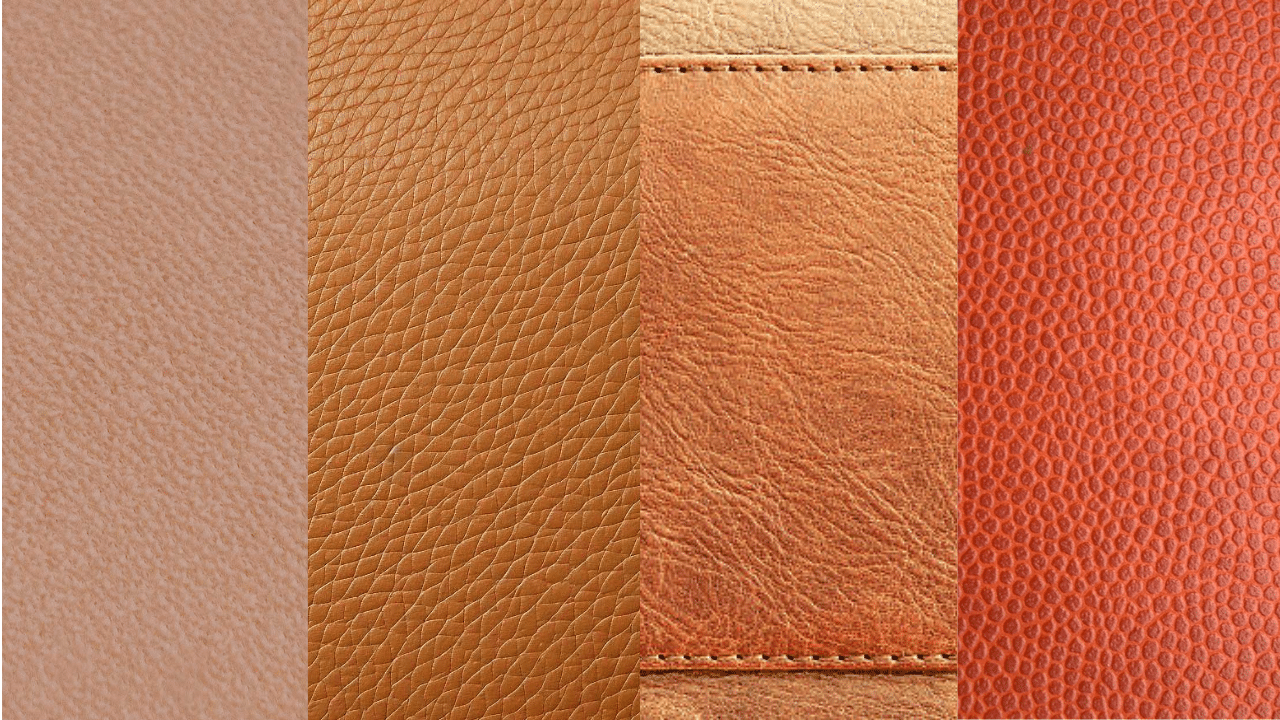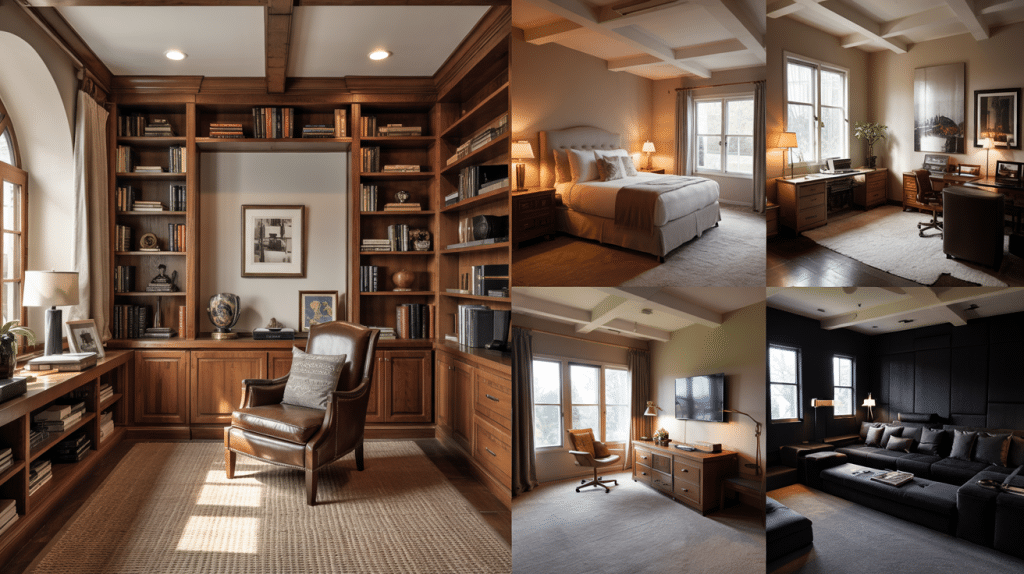Leather flooring stands as one of the most distinctive options in premium floor coverings, offering a sensory experience unlike any other material.
When you step onto leather floors, you immediately notice their unique warmth underfoot and subtle give that hardwood and tile simply cannot provide.
This tactile luxury comes from recycled leather products, transformed into practical, beautiful flooring that adds character to any space.
While relatively uncommon compared to traditional options, leather floors have garnered growing attention from designers and homeowners seeking something beyond the ordinary.
This guide examines everything about leather flooring—from its composition and types to maintenance requirements and practical considerations—helping you determine if this remarkable material deserves a place in your home.
What is Leather Flooring?
Leather flooring consists of recycled leather products (primarily cowhide) processed into tiles or planks for residential and commercial spaces.
Most leather flooring features a three-layer construction:
- Top layer: Genuine or recycled leather material
- Middle layer: Hardboard or fiberboard core for stability
- Bottom layer: Cork backing for insulation and sound dampening
Types of Leather Flooring

1. Full-Grain Leather
Premium option that preserves the natural hide texture and markings, offering authentic appearance and maximum durability.
It develops a beautiful patina over time, adding character to the floor as it ages. This type is often used in high-end interiors due to its luxurious and timeless appeal.
2. Top-Grain Leather
Slightly more refined surface where the uppermost layer has been sanded to remove imperfections, balancing naturalness with consistency.
It maintains much of the hide’s strength while offering a smoother, more uniform look. This makes it ideal for modern spaces that prioritize both style and practicality.
3. Bonded Leather
Economical option created by combining leather scraps and fibers with adhesives, formed into sheets with varying leather content percentages.
Though it doesn’t match the strength of full- or top-grain, it provides a budget-friendly alternative with the aesthetic of real leather. It’s commonly found in decorative applications rather than heavy-traffic areas.
4. Faux Leather
Synthetic alternative made from vinyl or other materials that mimic leather’s appearance and texture at a lower cost with increased water resistance.
It’s especially popular in spaces where moisture is a concern, like basements or kitchens. While it lacks the rich feel of real leather, it’s easy to maintain and available in a wide variety of colors and patterns.
Pros and Cons of Leather Flooring
Understanding the advantages and limitations of leather flooring helps you determine if this distinctive material is right for your space.
| Pros | Cons |
|---|---|
| Luxurious Aesthetic – Adds warmth and sophistication to spaces | Cost – More expensive than many traditional flooring options |
| Comfort – Soft underfoot and naturally warm | Water Sensitivity – Can be damaged by excess moisture |
| Durability – Becomes more supple and develops patina with age | Maintenance – Requires regular cleaning and occasional conditioning |
| Sound Absorption – Natural acoustic dampening properties | Scratches – Susceptible to damage from sharp objects and pet claws |
| Natural Material – Eco-friendly when made from recycled leather | Fading – May discolor in direct sunlight over time |
| Hypoallergenic – Doesn’t harbor dust mites or allergens | Installation – Requires professional installation for best results |
| Thermal Insulation – Helps maintain room temperature | Limited Wet Area Use – Not suitable for bathrooms or kitchens |
| Versatile Design Options – Available in various colors and textures | Denting – Can show impressions from heavy furniture |
Ideal Room Applications

Change your home with strategic leather flooring in these five spaces where this luxurious material truly shines-
Home Libraries: Leather flooring provides a quiet, sophisticated atmosphere that’s perfect for focused reading or study. The excellent acoustic properties help minimize sound, creating a serene environment ideal for a personal library or reading nook.
Master Bedrooms: A warm and comfortable surface underfoot makes leather flooring a natural choice for master bedrooms. It offers natural insulation, helping to maintain a cozy temperature year-round while adding a rich, welcoming touch to the space.
Home Offices: For those working from home, leather flooring helps create a refined, executive aesthetic while also reducing noise distractions.
Media Rooms: Enhancing sound quality is essential for entertainment spaces, and leather flooring contributes by improving acoustics and reducing echo. It helps create a more immersive viewing and listening experience, perfect for movie nights or gaming sessions.
Dens/Retreat Spaces: For areas meant to encourage relaxation and downtime, leather flooring creates an inviting, tactile environment.
Spaces to Avoid
Despite its grace and durability, leather flooring is not suitable for all areas.
It should be avoided in kitchens due to its vulnerability to water damage and food spills, which can lead to staining or deterioration.
Bathrooms are similarly unsuitable because leather cannot withstand constant moisture exposure.
Entryways present a challenge as they’re often subject to outdoor elements like dirt, rain, and heavy foot traffic. In sunrooms, leather flooring is likely to fade with continuous exposure to direct sunlight.
Finally, basements pose a risk due to humidity fluctuations, which can affect the stability and longevity of leather materials.
Maintenance and Care

Proper maintenance routines help preserve leather flooring’s beauty and extend its lifespan, requiring some specific but straightforward care practices.
-
Daily Maintenance: Sweep or vacuum with a soft brush attachment to remove dust and grit that can scratch the surface.
-
Spill Protocol: Wipe up spills immediately with a soft, slightly damp cloth, then dry thoroughly to prevent water damage or staining.
-
Deep Cleaning: Use only pH-neutral cleaners specifically formulated for leather; avoid harsh chemicals, ammonia, or citrus-based products.
-
Regular Conditioning: Apply specialized leather conditioner every 6-12 months to maintain moisture content and prevent cracking.
-
Furniture Protection: Install felt pads under furniture legs to prevent scratches and dents from heavy items.
-
Sun Protection: Use window treatments to minimize direct sunlight exposure, which can cause fading and drying over time.
Conclusion
Leather flooring represents a bold choice that balances luxury with practicality for those willing to commit to its specific care requirements.
Its natural beauty, comfort underfoot, and acoustic benefits make it an appealing alternative to conventional flooring in the right environments.
The distinctive patina that develops over years of use tells a story no other flooring material can match, creating spaces with depth and character that improve rather than degrade with age.
Before making your decision, carefully weigh the maintenance needs against your lifestyle, and consider starting with a smaller area to experience living with this material.
What spaces in your home might benefit most from leather flooring’s unique properties? We’d love to hear your thoughts in the comments below.
Frequently Asked Questions
Is Leather Flooring Expensive?
Yes, leather flooring typically costs $7-15 per square foot (materials only), making it more expensive than laminate or vinyl but comparable to premium hardwood options.
Is Leather Flooring Durable?
Quality leather flooring is moderately durable, lasting 25-30 years with proper maintenance, though it’s susceptible to scratches and water damage.
What is Floor Leather?
Floor leather is a specialized flooring material made from recycled leather processed into tiles or planks with a three-layer construction including a leather surface, fiberboard core, and cork backing.
Which is the Healthiest Flooring for Homes?
The healthiest flooring options include cork, solid hardwood, and natural linoleum, as they’re low in VOCs, naturally antimicrobial, and don’t trap allergens.


